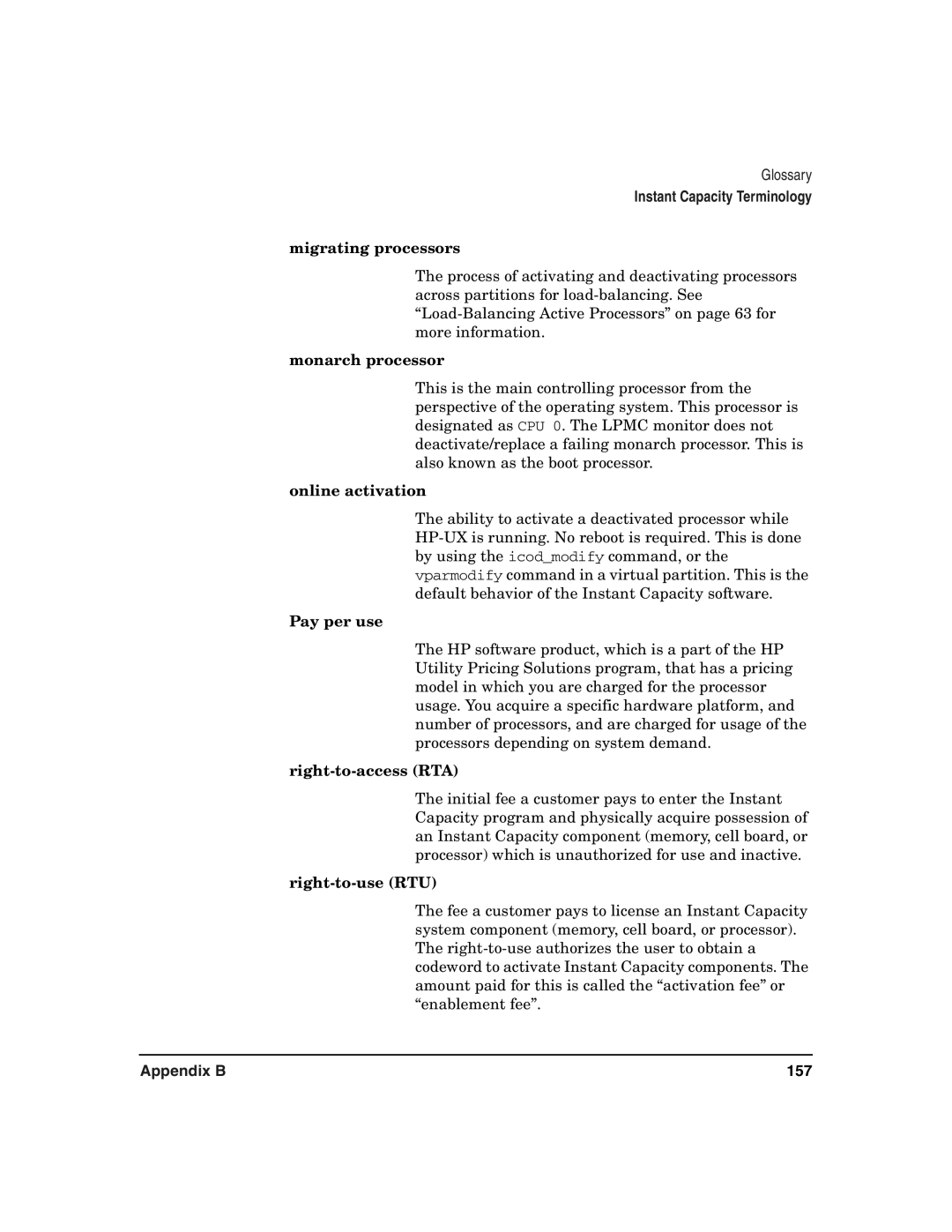Glossary
Instant Capacity Terminology
migrating processors
The process of activating and deactivating processors across partitions for
monarch processor
This is the main controlling processor from the perspective of the operating system. This processor is designated as CPU 0. The LPMC monitor does not deactivate/replace a failing monarch processor. This is also known as the boot processor.
online activation
The ability to activate a deactivated processor while
Pay per use
The HP software product, which is a part of the HP Utility Pricing Solutions program, that has a pricing model in which you are charged for the processor usage. You acquire a specific hardware platform, and number of processors, and are charged for usage of the processors depending on system demand.
right-to-access (RTA)
The initial fee a customer pays to enter the Instant Capacity program and physically acquire possession of an Instant Capacity component (memory, cell board, or processor) which is unauthorized for use and inactive.
right-to-use (RTU)
The fee a customer pays to license an Instant Capacity system component (memory, cell board, or processor). The
Appendix B | 157 |
